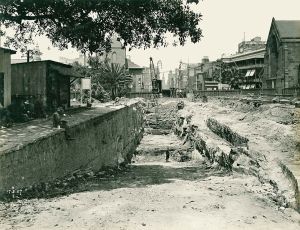 As you can see from the above I’m old school! Well, at least as far as keeping a record of my writing progress goes. Paris Next Week is my seventh manuscript. Yes, I love bashing my head against a brick wall! The first three manuscripts I can’t actually remember keeping a record of each page written. I’m pretty sure it all started with Tomaree. I was, by that time (early 2002) becoming more organised and setting goals. The main goal was – a page a day! A page a day is of course a manuscript in a year but as you can see from the very battered piece of paper covering the last three months, I’m only averaging slightly half that. I am, though, happy with my progress.
As you can see from the above I’m old school! Well, at least as far as keeping a record of my writing progress goes. Paris Next Week is my seventh manuscript. Yes, I love bashing my head against a brick wall! The first three manuscripts I can’t actually remember keeping a record of each page written. I’m pretty sure it all started with Tomaree. I was, by that time (early 2002) becoming more organised and setting goals. The main goal was – a page a day! A page a day is of course a manuscript in a year but as you can see from the very battered piece of paper covering the last three months, I’m only averaging slightly half that. I am, though, happy with my progress.
Of course there are many programs now that a writer can use to chart their progress and keep all their notes organised. I won’t discuss them all here as I don’t use them, lol. Here is my project management tool below:
It’s a notebook! Yep! In I keep very scattered notes but as I write I generally circle what I need to research further. I keep this with me at all times. When I’m reading research material I often jot notes down quickly. If a line from a character starts reverberating in my head, such as the simple words: “Money follows you.” from the wealthy Lilith, I jot that down too. Any more than a sentence though and I’ll have the laptop out pronto.
The main purpose of this post though is advice that covers all forms of record keeping and that is be generous! It really does help keep you motivated. I found this out by Tomaree and it’s my common practice now. Don’t worry if you’ve only written a few lines (generally you’ll find at the start of a new scene or chapter) put down half a page! If you look closely at the sheet above, you’ll see lots of 1/2 pages. You’ll find too that even being generous when you do a page count, reconciled with what you’ve written, you’ll still be missing a few pages – page breaks of course!
My sheet is very simple. It’s just the date, the title of the chapter and the amount of pages. From above you can see that I wrote 10 1/2 pages this March, only 2 1/2 pages in April, 10 1/2 in May and I have so far written another 10 1/2 this month. April I was on holidays painting doors and architraves in my house and my Mum came to stay. I was also checking over my Darlinghurst research. In May the next chapter required a bit of research in France and I’m currently researching crime scene practices in the 1920s regarding the discovery of a dead body.
By keeping this simple record you can actually see your month by month progress and highlight the months, where perhaps you have fallen behind. If I’m doing a lot of research, I will often note that research on the days I’m not writing. After all, it is progress too! If you don’t keep a record of each page written, give it a try. Don’t forget to record those half pages, keep at your writing and watch the pages mount up!



